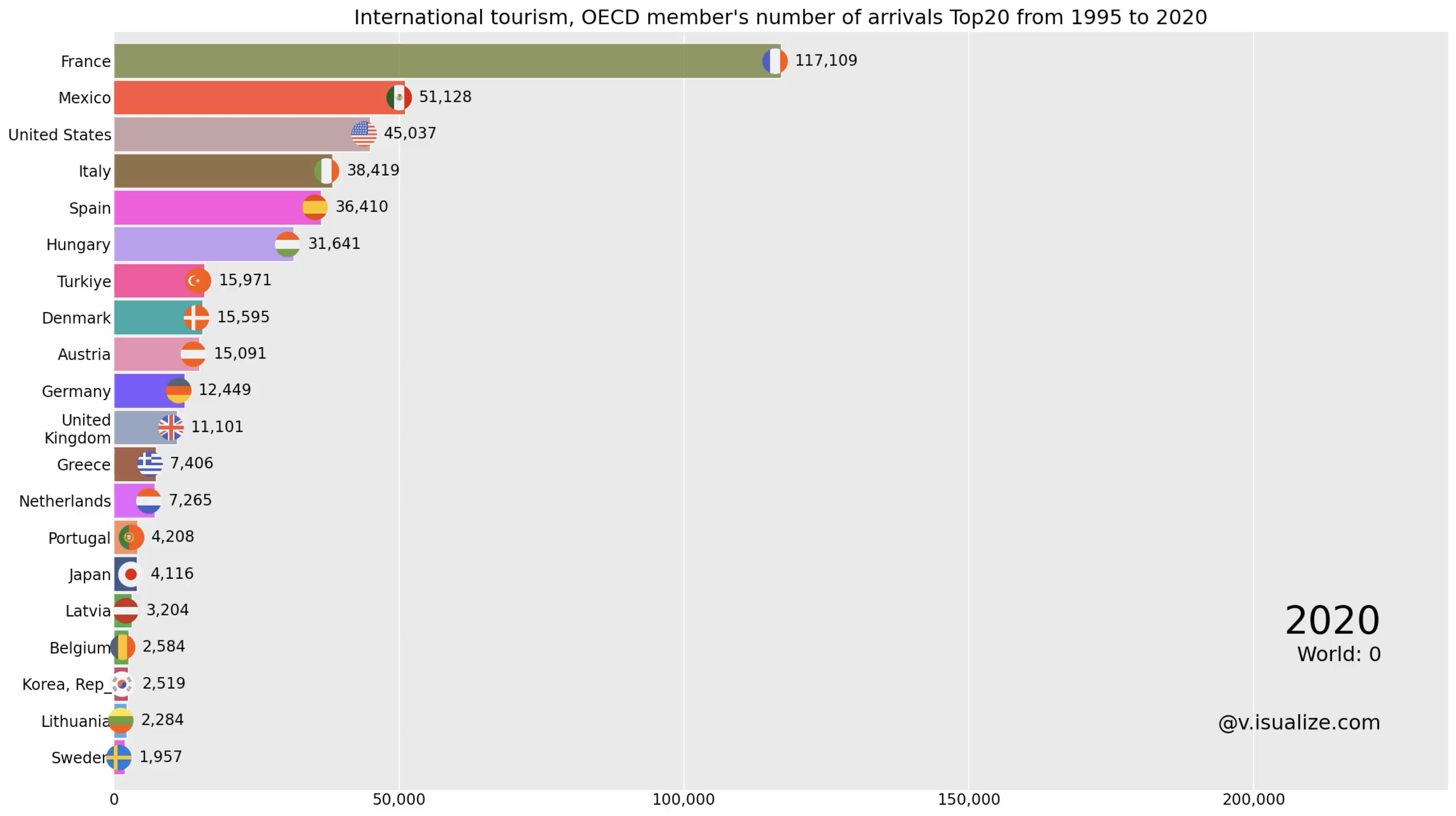International inbound tourists (overnight visitors) are the number of tourists who travel to a country other than that in which they have their usual residence, but outside their usual environment, for a period not exceeding 12 months and whose main purpose in visiting is other than an activity remunerated from within the country visited. When data on number of tourists are not available, the number of visitors, which includes tourists, same-day visitors, cruise passengers, and crew members, is shown instead. Sources and collection methods for arrivals differ across countries. In some cases data are from border statistics (police, immigration, and the like) and supplemented by border surveys. In other cases data are from tourism accommodation establishments. For some countries number of arrivals is limited to arrivals by air and for others to arrivals staying in hotels. Some countries include arrivals of nationals residing abroad while others do not. Caution should thus be used in comparing arrivals across countries. The data on inbound tourists refer to the number of arrivals, not to the number of people traveling. Thus a person who makes several trips to a country during a given period is counted each time as a new arrival (World Bank).
Key Observations:
- Steady Growth in Tourism:
- OECD member countries have seen a consistent increase in international tourism arrivals over the years, with notable peaks before 2020.
- Countries like France, the United States, and Spain consistently rank at the top, reflecting their popularity as travel destinations.
- Impact of Economic Development:
- High-income countries within the OECD have shown strong growth in tourism numbers, underlining the correlation between economic development and tourism attractiveness.
- Countries such as Germany, Italy, and the United Kingdom also recorded significant increases, showcasing the diverse appeal across the continent.
- Regional Variations:
- While European countries dominate the list, non-European members like the United States, Japan, and Australia also feature prominently, indicating the broad appeal of OECD nations.
- Tourism in the Asia-Pacific region, particularly Japan and Australia, has shown substantial growth, highlighting the increasing interest in these destinations.
- Pre-COVID Peak:
- Most OECD countries saw their highest number of arrivals in the years leading up to 2020, before the global pandemic drastically reduced international travel.
- The data for 2020 reflects the severe impact of COVID-19, with a dramatic decline in tourism numbers across all countries.



Comments